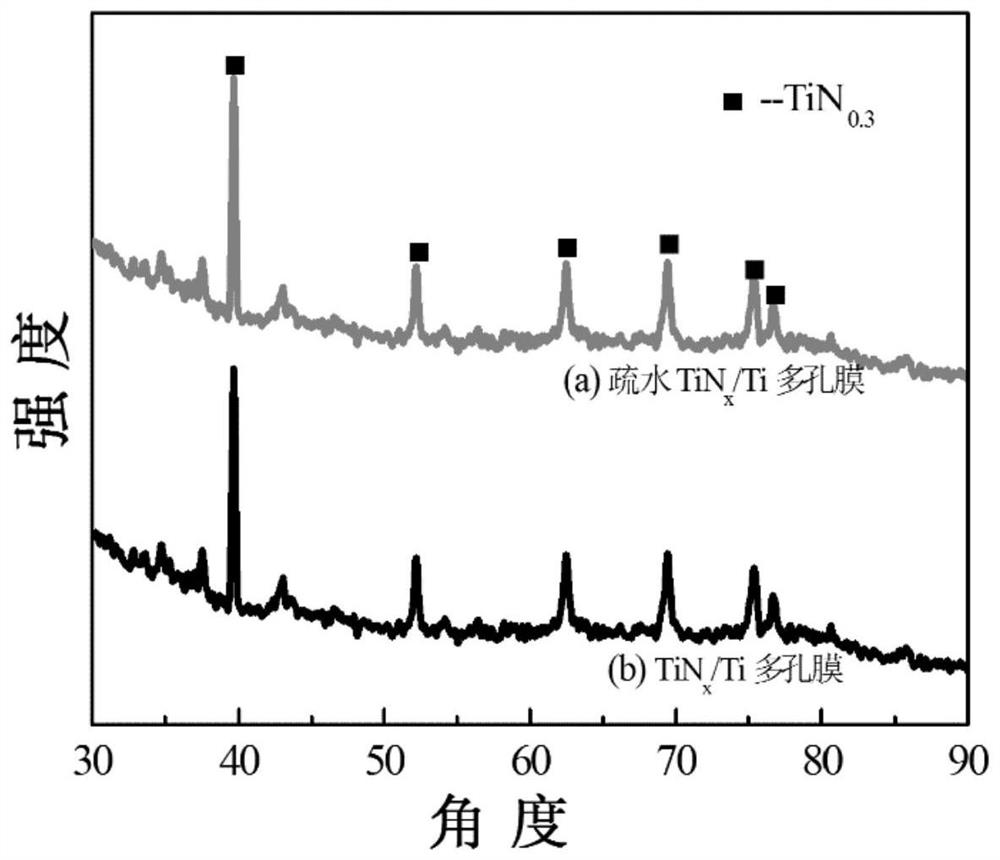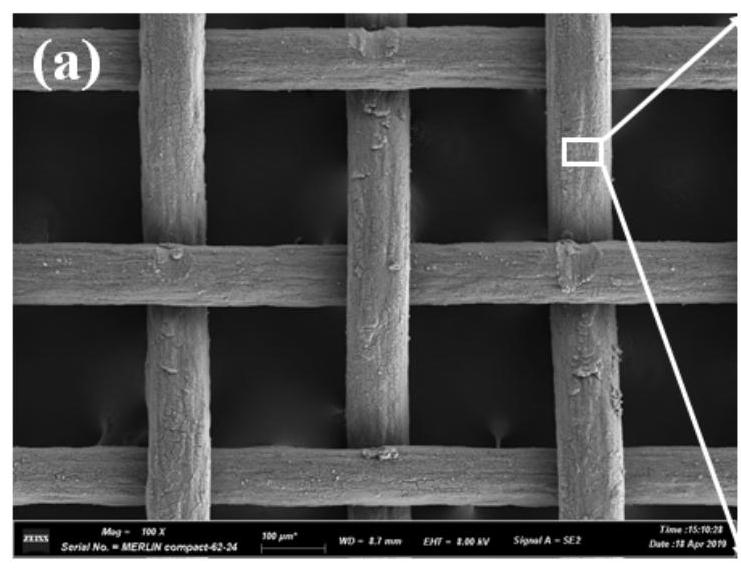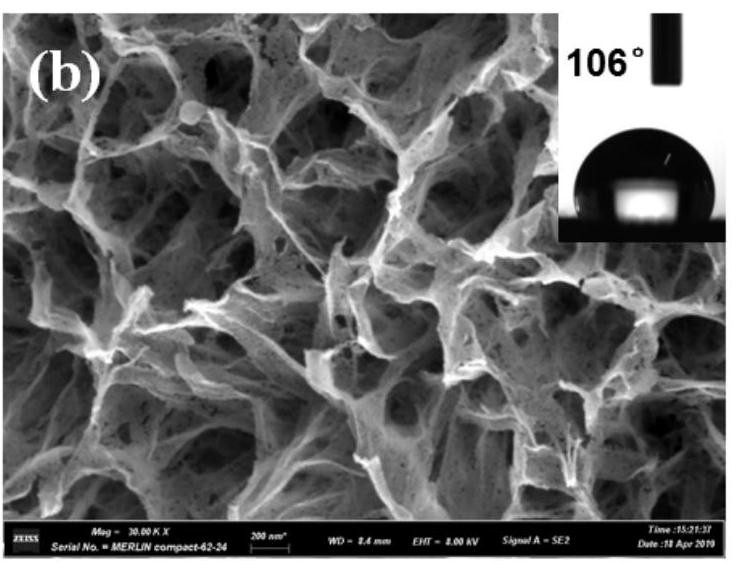A porous photothermal film with anti-salt precipitation performance and its preparation and application
A porous film and performance technology, applied in the field of solar desalination, can solve the problems of low light absorption efficiency, wide light absorption, and can only absorb ultraviolet light, etc., and achieve the effect of simple preparation process, strong operability, and easy popularization and application
- Summary
- Abstract
- Description
- Claims
- Application Information
AI Technical Summary
Problems solved by technology
Method used
Image
Examples
Embodiment 1
[0038] Step 1: Base Treatment
[0039] Sonicate 100-mesh Ti mesh (4cm*4cm, can be cut as needed) in acetone, alcohol, and deionized water for 30 minutes to remove surface impurities.
[0040] The second step: TiO 2 / Ti porous membrane preparation
[0041] Put the Ti grid treated in the above steps into 10M NaOH solution, keep it warm at 120°C for 12h for hydrothermal synthesis reaction, then perform ion exchange in 1M HCl solution for 10min, and finally anneal at 500°C for 0.5h, the heating rate 2°C·min -1 , and finally obtain TiO 2 / Ti hierarchical hole structure photothermal film, micropore 150um, nanopore about 500-600nm.
[0042] The third step: TiN x / Ti porous membrane preparation
[0043] TiO prepared by the above steps 2 / Ti porous membrane was nitrided at 1000°C to obtain TiN x / Ti porous membrane. The processing time is 7h, the working gas is NH 3 , air flow 10ml·min -1 .
[0044] Step Four: Hydrophobic Modification
[0045] The TiN prepared by the above...
Embodiment 2
[0050] Step 1: Base Treatment
[0051] Sonicate the 50-mesh Ti mesh (4cm*4cm, can be cut as needed) in acetone, alcohol, and deionized water for 30 minutes to remove surface impurities.
[0052] The second step: TiO 2 / Ti porous membrane preparation
[0053] Put the Ti mesh treated in the above steps into 10M NaOH solution, keep it warm at 120°C for 2h for hydrothermal synthesis reaction, then perform ion exchange in 1M HCl solution for 10min, and finally anneal at 500°C for 0.5h, the heating rate 2°C·min -1 , and finally obtain TiO 2 / Ti hierarchical hole structure photothermal film, the micropore is 270um, and the nanopore is about 100-200nm.
[0054] The third step: TiN x / Ti porous membrane preparation
[0055] TiO prepared by the above steps 2 / Ti porous membrane was nitrided at 1000°C to obtain TiN x / Ti porous membrane. The processing time is 7h, the working gas is NH 3 , air flow 10ml·min -1 .
[0056] Step Four: Hydrophobic Modification
[0057] The TiN p...
Embodiment 3
[0061] Step 1: Base Treatment
[0062] Sonicate 200-mesh Ti mesh (4cm*4cm, can be cut as needed) in acetone, alcohol, and deionized water for 30 minutes to remove surface impurities.
[0063] The second step: TiO 2 / Ti porous membrane preparation
[0064] Put the Ti net treated in the above steps into 10M NaOH solution, keep it warm at 120°C for 6h for hydrothermal synthesis reaction, then conduct ion exchange in 1M HCl solution for 10min, and finally anneal at 500°C for 0.5h, the heating rate 2°C·min -1 , and finally obtain TiO 2 / Ti hierarchical hole structure photothermal film, the micropore is 75um, and the nanopore is about 200-300nm.
[0065] The third step: TiN x / Ti porous membrane preparation
[0066] TiO prepared by the above steps 2 / Ti porous membrane was nitrided at 800°C to obtain TiN x / Ti porous membrane. The processing time is 10h, the working gas is NH 3 , air flow 10ml·min -1 .
[0067] Step Four: Hydrophobic Modification
[0068] The TiN prepar...
PUM
| Property | Measurement | Unit |
|---|---|---|
| pore size | aaaaa | aaaaa |
Abstract
Description
Claims
Application Information
 Login to View More
Login to View More - R&D Engineer
- R&D Manager
- IP Professional
- Industry Leading Data Capabilities
- Powerful AI technology
- Patent DNA Extraction
Browse by: Latest US Patents, China's latest patents, Technical Efficacy Thesaurus, Application Domain, Technology Topic, Popular Technical Reports.
© 2024 PatSnap. All rights reserved.Legal|Privacy policy|Modern Slavery Act Transparency Statement|Sitemap|About US| Contact US: help@patsnap.com










